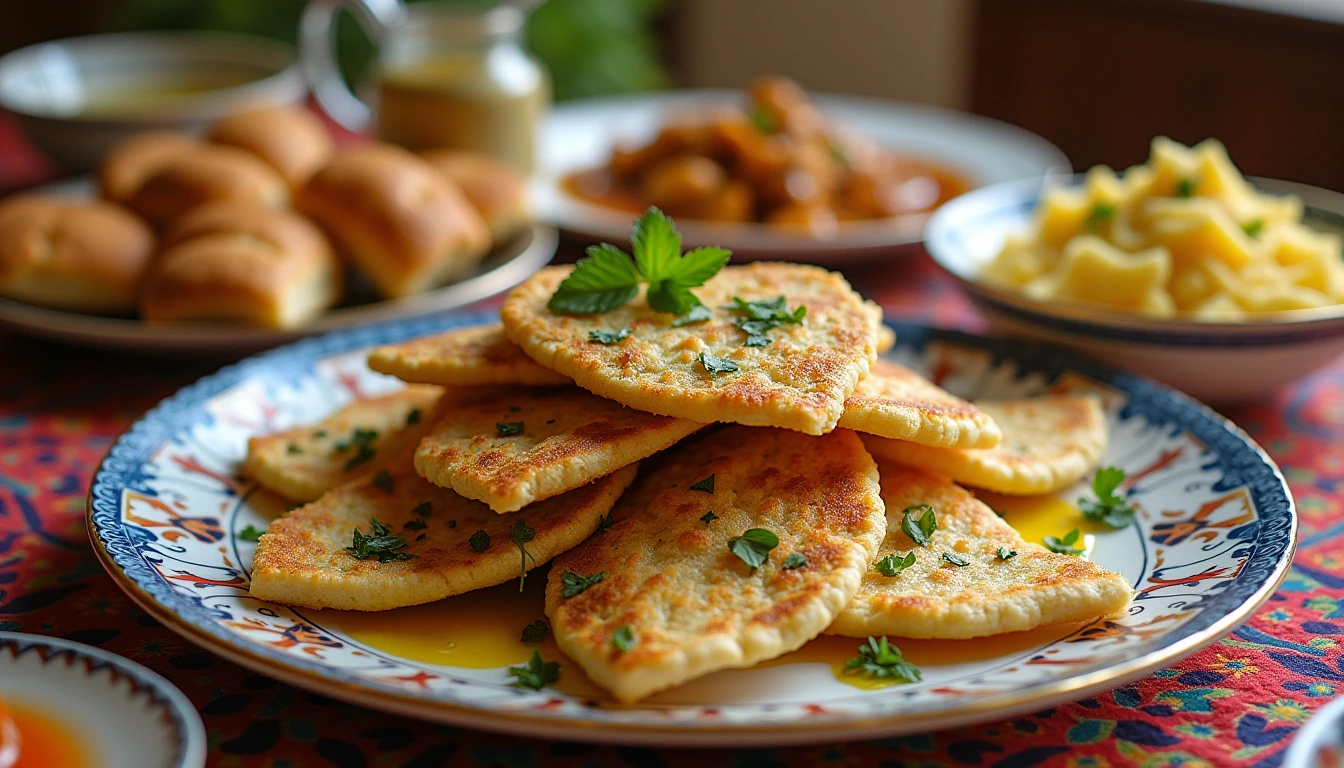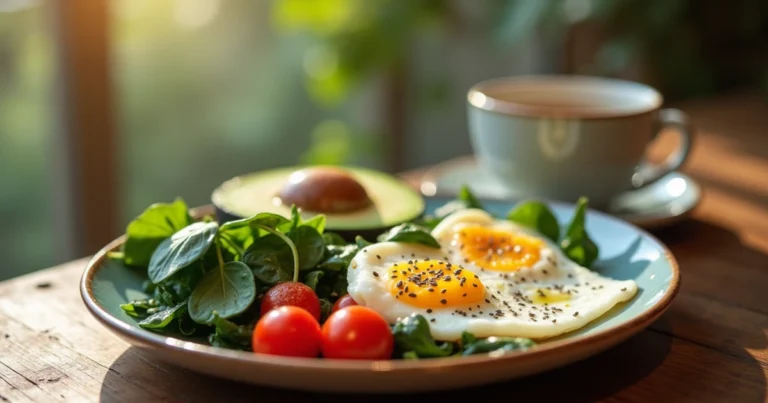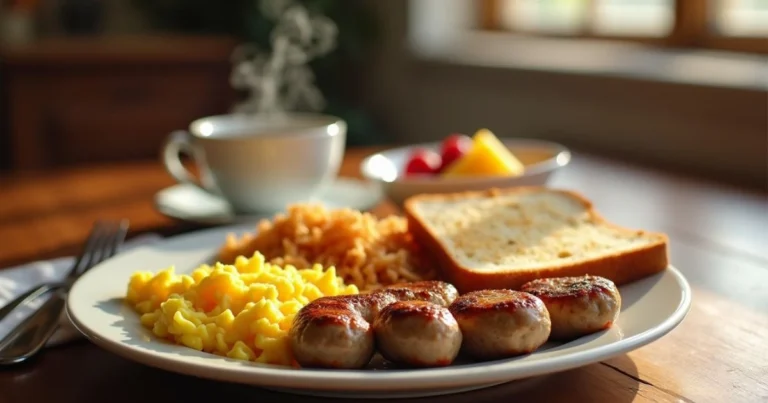Delicious Arabic Breakfast Food Recipes You’ll Love to Try Today

A Taste of Home, No Matter Where You Are
“Arabic breakfast food recipes offer more than just nourishment — they invite you into a culture rich with tradition, flavor, and heart. Whether you’re longing for the warmth of your grandmother’s kitchen or you’re exploring Middle Eastern cuisine for the first time, these breakfast dishes are your perfect entry point. From savory flatbreads to comforting stews, you’re about to discover recipes that are as soul-soothing as they are satisfying.”
Table of Contents
What Makes a Traditional Arabic Breakfast Unique?
A Rich Tapestry of Flavors
Arabic breakfasts celebrate contrast. You’ll find sweet dates beside salty cheeses, earthy hummus alongside tangy pickles. The ingredients are humble, but the combination? Unforgettable. Expect olives, labneh, warm bread, and vibrant herbs like mint and parsley.
The Social Experience
Breakfast in Arabic culture isn’t just food — it’s fellowship. It’s where conversations linger, dishes are passed around, and the table is filled with love and laughter. Whether shared with family or neighbors, it’s a meal meant to be enjoyed slowly and together.
Must-Try Traditional Arabic Breakfast Food Recipes
You don’t need a pantry full of exotic ingredients to bring these recipes to life. Start with a few staples, and you’ll quickly discover how easy and satisfying they are.
1. Ful Medames (Stewed Fava Beans)
A powerhouse dish of the Arab world, especially in Egypt and the Levant, ful medames is protein-packed and comforting.

Ingredients Table:
| Ingredient | Quantity |
|---|---|
| Cooked fava beans | 1 can (400g) |
| Olive oil | 2 tbsp |
| Garlic (minced) | 2 cloves |
| Lemon juice | 2 tbsp |
| Salt & pepper | To taste |
Instructions:
- Warm the fava beans in a saucepan.
- Mash slightly for a thicker texture.
- Stir in olive oil, garlic, lemon juice, salt, and pepper.
- Garnish with chopped parsley and serve warm with flatbread.
2. Manakish (Za’atar Flatbread)
Think of manakish as the Levantine version of pizza. It’s aromatic, crispy, and deeply satisfying.
Ingredients:
- 2 cups all-purpose flour
- 1 tsp yeast
- ½ tsp sugar
- ½ tsp salt
- ¾ cup warm water
- ¼ cup za’atar spice blend
- ¼ cup olive oil
Steps:
- Mix flour, yeast, sugar, and salt. Add water to form dough.
- Let rise for 1 hour.
- Roll out the dough and mix the za’atar with olive oil.
- Spread the za’atar mix over the dough and bake at 400°F (200°C) for 10-12 minutes.
3. Labneh (Strained Yogurt Cheese)
Creamy and tangy, labneh is a lighter alternative to cream cheese.
DIY Labneh:
- Use 2 cups full-fat Greek yogurt.
- Add ½ tsp salt and stir.
- Line a bowl with cheesecloth, pour the yogurt in, and tie up.
- Let it drain in the fridge for 24 hours.
Serve with a drizzle of olive oil, cucumbers, and mint. Pair with warm pita for the perfect bite.
4. Shakshuka (Eggs Poached in Tomato Sauce)
A North African classic embraced across the Middle East.

Ingredients:
- 1 tbsp olive oil
- 1 onion (sliced)
- 2 garlic cloves (minced)
- 1 red bell pepper (sliced)
- 1 can of chopped tomatoes
- 1 tsp paprika
- 4 eggs
- Salt and pepper to taste
Instructions:
- Sauté onion and garlic in olive oil.
- Add bell pepper, tomatoes, and spices.
- Simmer until thickened, then make small wells and crack eggs into them.
- Cover and cook until eggs are just set.
5. Balaleet (Sweet Vermicelli with Eggs)
Popular in Gulf countries, this dish offers a beautiful contrast of sweet and savory.
Ingredients:
- 1 cup vermicelli noodles
- 2 tbsp sugar
- 1 tsp cardamom
- A few saffron threads soaked in warm water
- 2 eggs, beaten
Directions:
- Boil vermicelli until soft, then drain.
- Mix with sugar, cardamom, and saffron.
- Fry eggs separately and serve on top of the sweet noodles.
Essential Accompaniments for an Authentic Arabic Breakfast
Breads to Serve:
- Khubz: Traditional Arabic flatbread
- Markook: Ultra-thin wrap-style bread
- Pita: Widely available and perfect for dipping
Condiments & Sides:
- Hummus: Chickpea dip with tahini
- Mutabbal: Smoky eggplant dip
- Fresh Additions: Mint, olives, cucumbers, tomatoes, pickled turnips
Tips for Preparing Arabic Breakfast at Home
Keep It Simple, Fresh, and Shareable
- Start with 2-3 dishes
- Prep ingredients like labneh and hummus the night before
- Arrange everything mezze-style to encourage grazing and sharing
Where to Find Ingredients
- Look for local Middle Eastern grocers
- Online specialty food markets
- Substitute when necessary (Greek yogurt for labneh, white beans for fava beans)
FAQ: Traditional Arabic Breakfast Food Recipes
What are some easy Arabic breakfast food recipes for beginners?
If you’re just starting out, go for labneh, ful medames, or manakish. They require few ingredients and offer big flavor rewards.
Can I make Arabic breakfast recipes vegan or vegetarian?
Absolutely. Most dishes like hummus, ful, and za’atar flatbread are plant-based or easily adapted.
What is the best bread to serve with Arabic breakfast food?
Khubz and pita are traditional favorites. They soak up olive oil and dips beautifully.
Are Arabic breakfast foods healthy?
Yes! They’re typically rich in fiber, healthy fats, and protein. You get a satisfying meal that doesn’t weigh you down.
Conclusion: Bringing the Heart of Arabia to Your Table
Traditional Arabic breakfast food recipes connect you with a culture of warmth, sharing, and rich culinary heritage. They bring stories to life through flavor and turn everyday meals into memorable moments. Try one or try them all — your kitchen is about to become the coziest, most flavorful spot in the house.
Ready to taste something new?
Invite some friends, lay out your mezze-style breakfast, and start your day the Arabic way. Share your photos, swap stories, and keep the tradition going.
Hungry for more recipes? Drop your email below to get authentic Middle Eastern dishes straight to your inbox each week.





